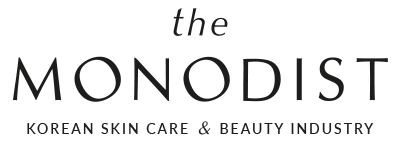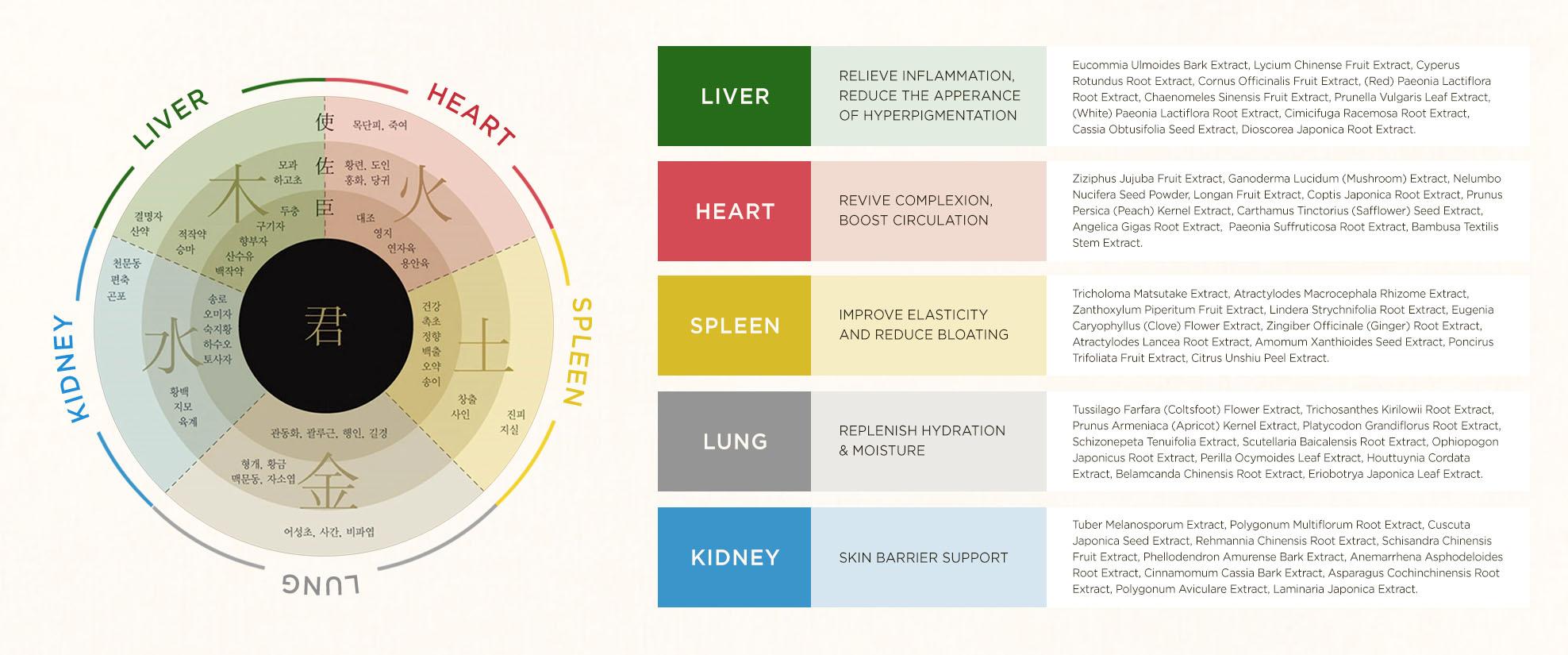The History of Whoo
Hwanyu Imperial Youth line
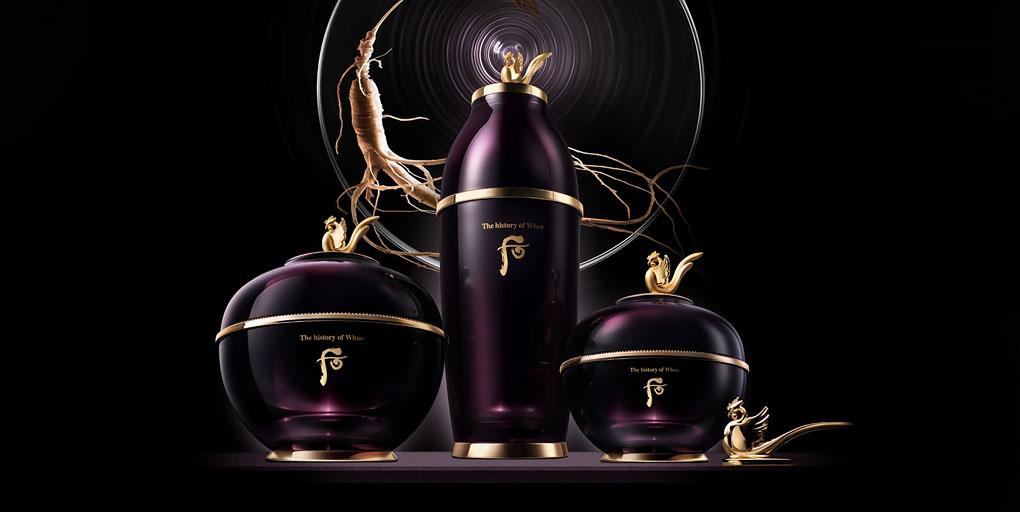
Hwanyu (환유) is The History of Whoo’s luxury anti-aging skincare line that provides a complete holistic treatment to address complex signs of aging. The line is powered by Natural Wild Ginseng protoplasts and a core of 70 herbal ingredients that include some of the most precious ingredients available in Oriental Medicine.
Disclaimer: I personally translated the majority of facts and contents in this article from original Korean sources, so I kindly ask you to credit my work if you’re planning to use any of the information included in this guide.
Many concepts mentioned in this guide are based on Oriental Medicine principles, for a better understanding please refer to the introduction to Traditional Korean Medicine on this website. It’s important to stress out that there is no correspondence between Oriental Medicine organs and Western anatomy so capitalised names in this article shouldn’t be interpreted in the Western medical sense.
⬥ Recommended for:
Main Ingredients
⬥ Imperial Youth Complex™
At the heart of The History of Whoo’s Hwanyu line is the Imperial Youth Complex™, an ingredient that has been meticulously developed over the course of 17 years of ginseng research.
The Imperial Youth Complex™ combines potent anti-aging ingredients with protoplasts derived from Natural Wild Ginseng, an extremely rare botanical treasure renowned for its remarkable restorative and rejuvenating properties.
Besides Natural Wild Ginseng, The History of Whoo’s Imperial Youth Complex™ includes four ingredients protected by patents, including two ingredients that cater to skin texture, one that enhances skin moisture levels, and one that fortifies the skin’s barrier function1.
Designed to address a range of skin concerns, the Imperial Youth Complex™ has been shown to help improve skin elasticity, reduce the appearance of wrinkles, provide soothing and moisturising effects, and strengthen the skin’s natural barrier function.
The secret to the Imperial Youth Complex™’s unparalleled efficacy lies in the brand’s innovative “Cell Bio Technology”, a proprietary extraction method that preserves the integrity and potency of the ginseng protoplasts. Unlike traditional extraction processes that often rely on heat, pressure, or harsh solvents, this cutting-edge approach ensures that the protoplasts within the ginseng remain intact, retaining their full potency and transformative capabilities.
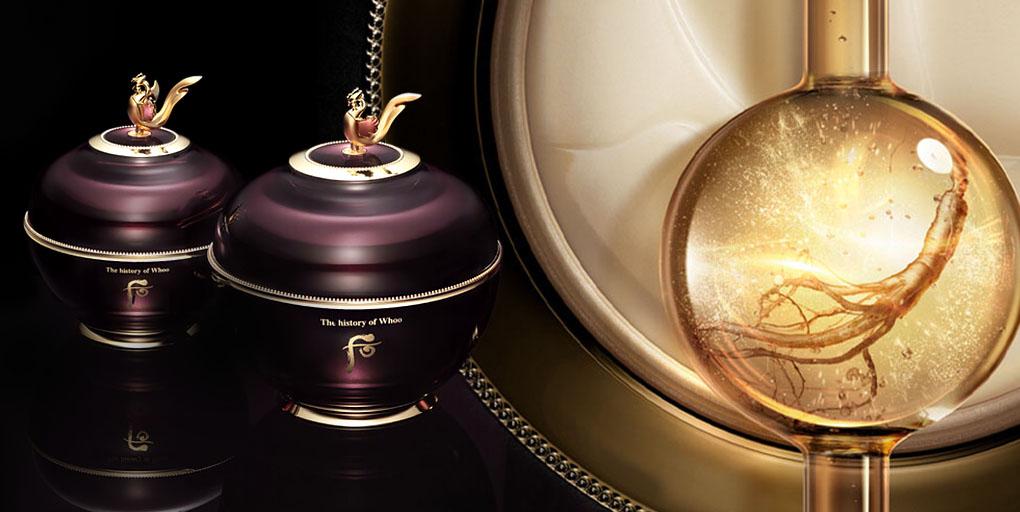
The Wild Ginseng protoplasts used in the Imperial Youth Complex™ are derived from the whole ginseng plant, known as “Jeoncho” (전초, 全草) in Korean, which includes the roots, leaves, and stems of the plant. By harnessing the full spectrum of the ginseng plant, the complex delivers a synergistic blend of potent anti-aging compounds.
To create the Imperial Youth Complex™, The History of Whoo uses “Imperial Ginseng 30” – Natural Wild Ginseng plants that have thrived for 260,000 hours (equivalent to 30 years) in their natural environment without human interference, developing unparalleled strength and resilience.
In order to maintain the highest quality standards, The History of Whoo carefully harvests only a limited number of these Wild Ginseng plants during the peak Yang Qi season, which spans from May to September. By harvesting during this optimal period, the brand ensures that each plant contains the maximum concentration of bioactive compounds, further enhancing the efficacy of the Imperial Youth Complex™.
Imperial Youth Complex™ consists of: Panax Ginseng Root Protoplasts, Phloretin, Gamma-Oryzanol, Pyridoxine Hydrochloride, Tranexamic Acid, Betaine, Ferulic Acid, Serine, Arginine, Citric Acid, Trehalose, Adenosine, 2,3-Butanediol, Water, Butanediol, 1,2-Hexanediol.
⬥ Imperial Ginseng 30 (Whole Plant Of Natural Cheonjong Wild Ginseng, 천종산삼전초, 天種山蔘全草)
Panax Ginseng is one of the most expensive Hanbang herbs. Ginseng is also known as “Shincho” (신초, 神草), meaning “God’s Herb”, and in Oriental Medicine it’s commonly used to replenish Qi (“tonify Qi”) across the Five Organs (오장, 五臟).
Wild Ginseng (Panax Ginseng Meyer cv. Silvatica) and Cultivated Ginseng present significant differences, in terms of market price, morphology and of general properties. In fact, Wild Ginseng was shown to contain at least 10 times the amount of active compounds of Cultivated Ginseng2. This enhanced effectiveness, along with its natural scarcity and difficult availability, make Wild Ginseng one of the most precious herbal remedies in Oriental Medicine.
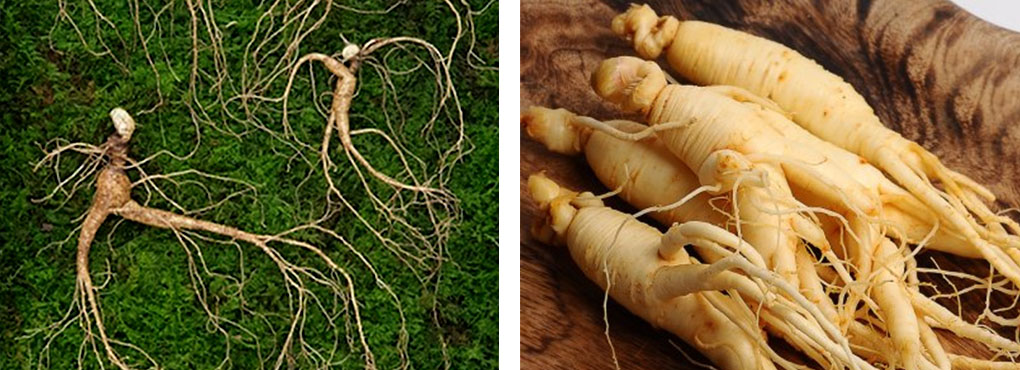
Different morphological characteristics of Wild Ginseng (sx) and Cultivated Ginseng (dx). (source: YTN)
Due to the scarcity of the plant, many Wild Ginseng plants currently on the market are obtained through human intervention. This type of Wild Ginseng is called “Wild-Simulated Ginseng” and results from humans planting ginseng seeds in an environment where Wild Ginseng usually grows, allowing the plant to develop as naturally as possible.
Wild-Simulated Ginseng is known to contain more active ingredients than Cultivated Ginseng but not as much as real Wild Ginseng, and for this reason the market price of Wild-Simulated Ginseng is slightly more accessible5.
The History of Whoo’s Hwanyu line is formulated using “Imperial Ginseng 30”, commonly known as “Natural Cheonjong Wild Ginseng”, the most precious variety of Wild Ginseng: plants that grow without any human intervention in an optimal natural environment for at least 5 generations3.

In Oriental Medicine, “Daodi” is a term that indicates medicinal herbs with the highest pharmacological properties, grown in specific geographical areas with specific natural conditions and being harvested and processed following specific standards. “Natural Cheonjong Wild Ginseng” describes Korean Wild Ginseng grown in a Daodi region for at least 5 generations.
In particular, the Ginseng used in the Hwanyu line is a 30 year old root that grows in the steep valleys of Gangwon-do, a Korean province renowned for its high mountains.
In order to maintain the highest quality standards, The History of Whoo carefully harvests only a limited number of these Wild Ginseng plants during the peak Yang Qi season, which spans from May to September. In Oriental Medicine, Yang Qi (양기, 陽氣) is a vital energy or driving force that governs the body’s biological activities, and it is associated with qualities such as active, warm, and expansive. In nature, Yang Qi is responsible for processes involving growth, expansion, and transformation, including the flourishing of plants.
Among all varieties of Panax Ginseng, “Natural Cheonjong Wild Ginseng” is the one with the highest concentration of active principles and the best medicinal efficacy4. To maximise the benefits of this precious ingredient, The History of Whoo incorporated the whole body of the plant in the Hwanyu line, from leaves to roots.
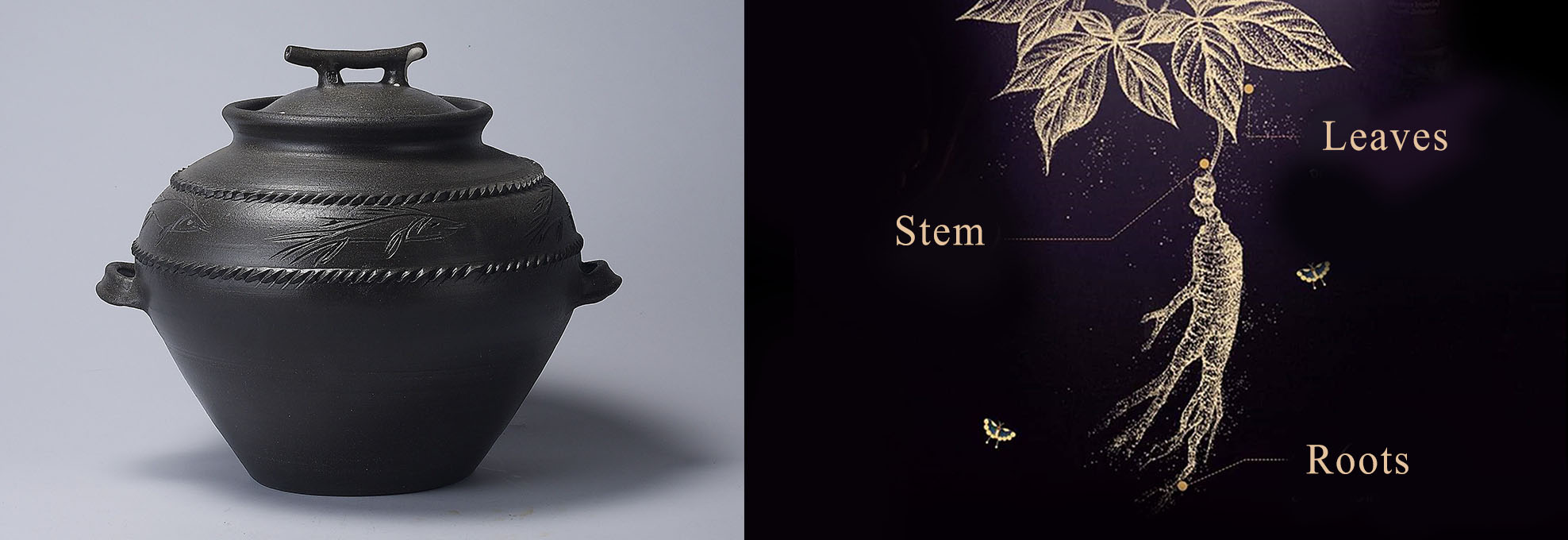
In addition, the plant was processed following the traditional Baekjung Gobeop method (백증고법, 百蒸膏法) to further enhance its active components. Baekjung Gobeop is a decoction technique which consists of heating the whole body of a plant for 100 hours inside a PU-RE earthenware pot (푸레도기), a traditional Korean ceramic vessel historically reserved for members of the royal court. The process results in herbal pills (환제, 丸劑) made of finely powdered ginseng, ensuring the preservation of its efficacy and therapeutic properties.
The term ‘PU-RE’ originates from the Korean word for “bluish” (푸르스름한, “pu-reu-seu-reum-han”)6, alluding to the material’s distinctive bluish hue. The porous nature of the earthenware facilitates the natural circulation of air, creating an optimal environment for food storage and fermentation. In addition to its breathable properties, PU-RE pottery is renowned for its waterproof, preservative and purifying functions, making it an ideal choice for long-term storage and fermentation of foods and ingredients.
Unlike conventional pottery, PU-RE cannot be fired through stacking. Each piece is meticulously fired individually over an 80-hour period in a firewood kiln, reaching temperatures of 1250~1300℃. No glaze is applied during this process, allowing the natural qualities of the clay to shine through.
As the kiln reaches a temperature of 1280 degrees, Cheonilyeom (천일염, 天日鹽 traditional Korean sun-dried sea salt) is sprinkled onto the vessel, which serves to enhance its preservative properties. The kiln is then sealed to complete the process.
The vaporisation of the salt results in the release of black smoke (carbon), which permeates the porous structure of the vessel. The ash from the salt and the firewood naturally adheres to the vessel, melding with its surface and bestowing upon it the distinctive bluish hue that is synonymous with PU-RE pottery5.

PU-RE production process (source: Korea Craft & Design Foundation)
⬥ 70+ Oriental Medicinal Herbs
All products in the Hwanyu line contain an active core composed of over 70 herbal ingredients combined in accordance with the Gunsinjwasa principle (군신좌사, 君臣佐使), which is the fundamental formulation principle of Oriental Medicine. This principle, also referred to as the “Monarch, Minister, Assistant and Envoy”, outlines a sophisticated hierarchy of ingredients designed to address all facets of a given health condition.
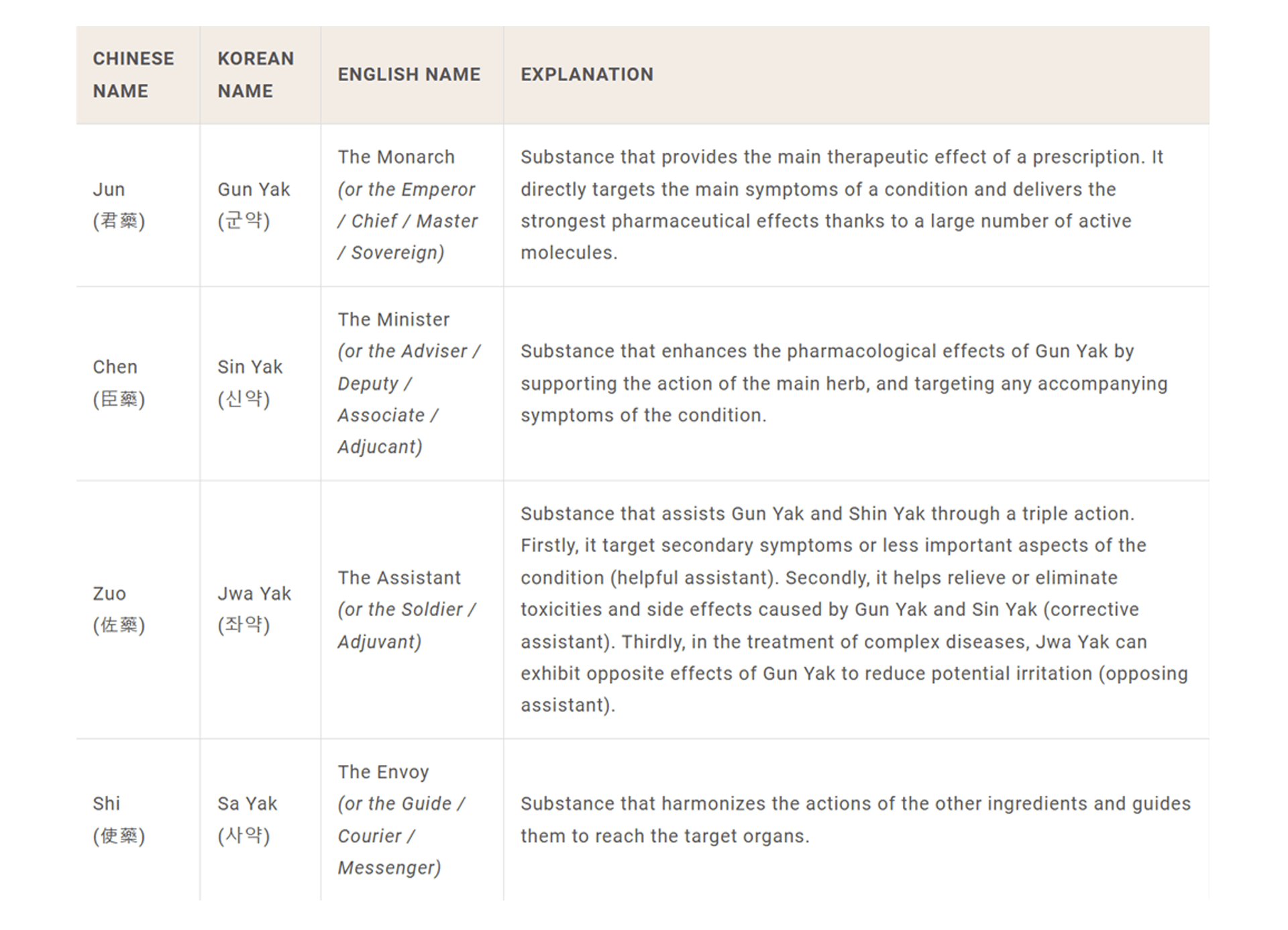
[click to enlarge]
Some simple prescriptions can contain only the main principles (Gun Yak and Sin Yak) or a substance can serve more than one function within the same formula.
A 2015 study by a Korean research team led by Professor Lee Sang Yup from the Department of Chemical and Biomolecular Engineering at KAIST, found that not only prescriptions formulated following the Gunsinjwasa principle had a synergistic mechanism, but they also shared significant structural similarities to human metabolites, especially when compared to Western medicinal prescriptions7.
Below how the principle was applied to the core ingredients of the Hwanyu line:
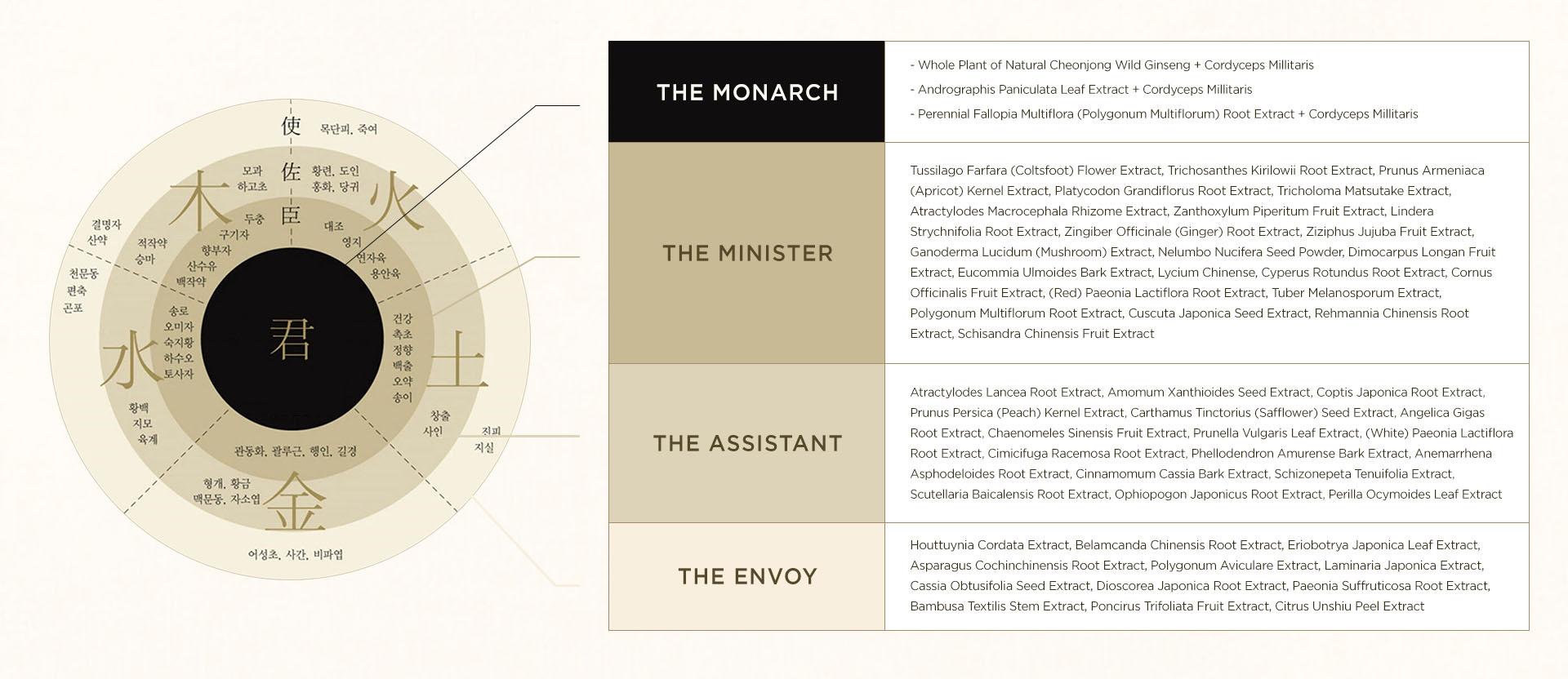
[click to enlarge]
Plus, the formula also exhibits the characteristics of the Five Phases (오행, 五行) to provide a complete anti-aging treatment.
The Five Phases is the philosophical notion that all changes in the universe happen in a pattern of five stages. The five stages correspond to five natural elements:
As part of nature, the internal organs of the human body are also believed to correlate with the Five Phases according to their behavior and function in the body.
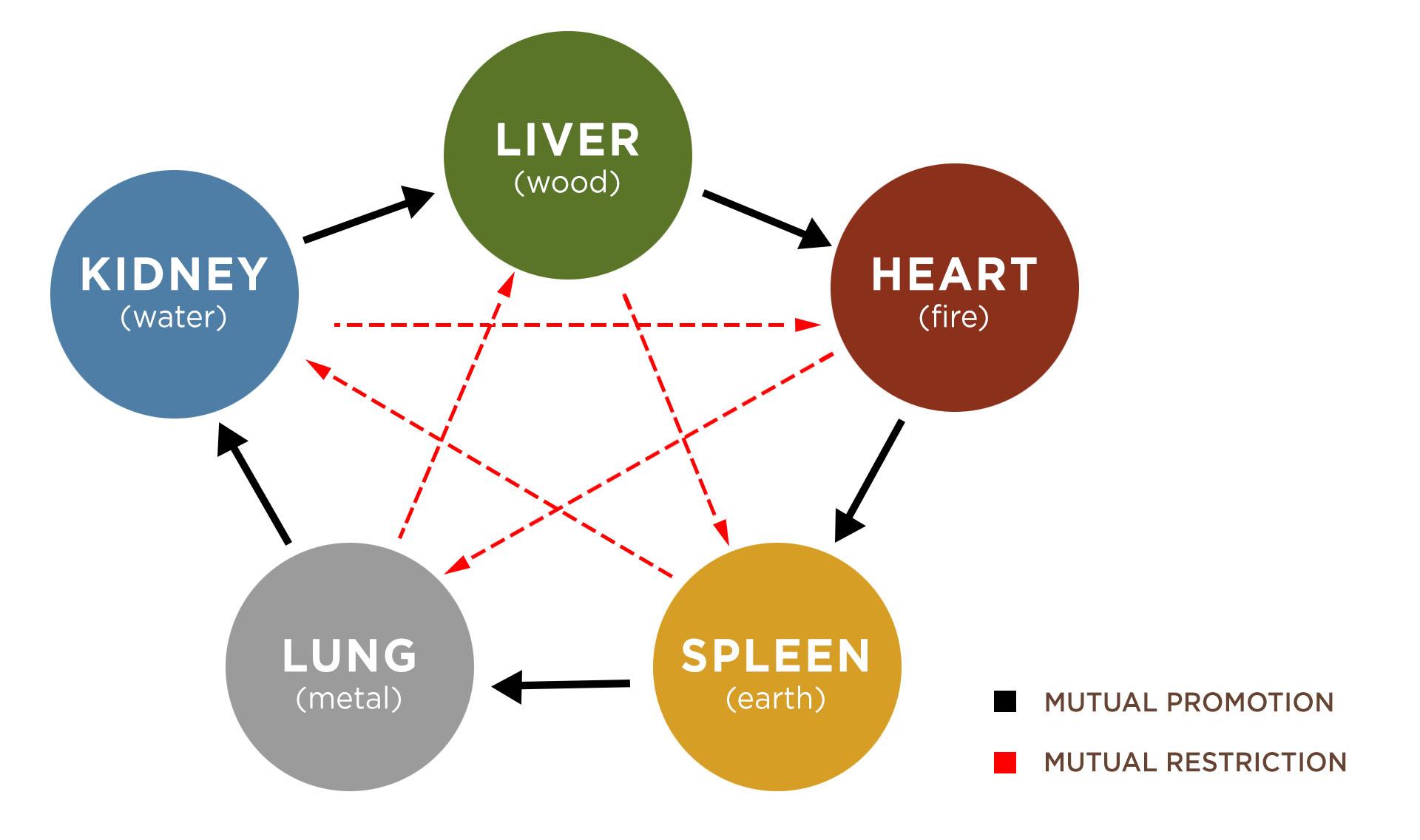
Like all health conditions, in Oriental Medicine the process of skin aging can be traced back to deficiencies of the Five Organs / Phases. According to this theory:
In addition, the efficacy of the main active ingredients (also known as the Monarch ingredients) was enhanced following the theory of Boncho Baewiron (본초 배위론, 本草 配位論). Boncho Baewiron is a traditional principle of Oriental Medicine in which two ingredients with complimentary properties are combined together in a decoction to double their efficacy.
In the Hwanyu line, the main active ingredients have been combined with Cordyceps Millitaris.
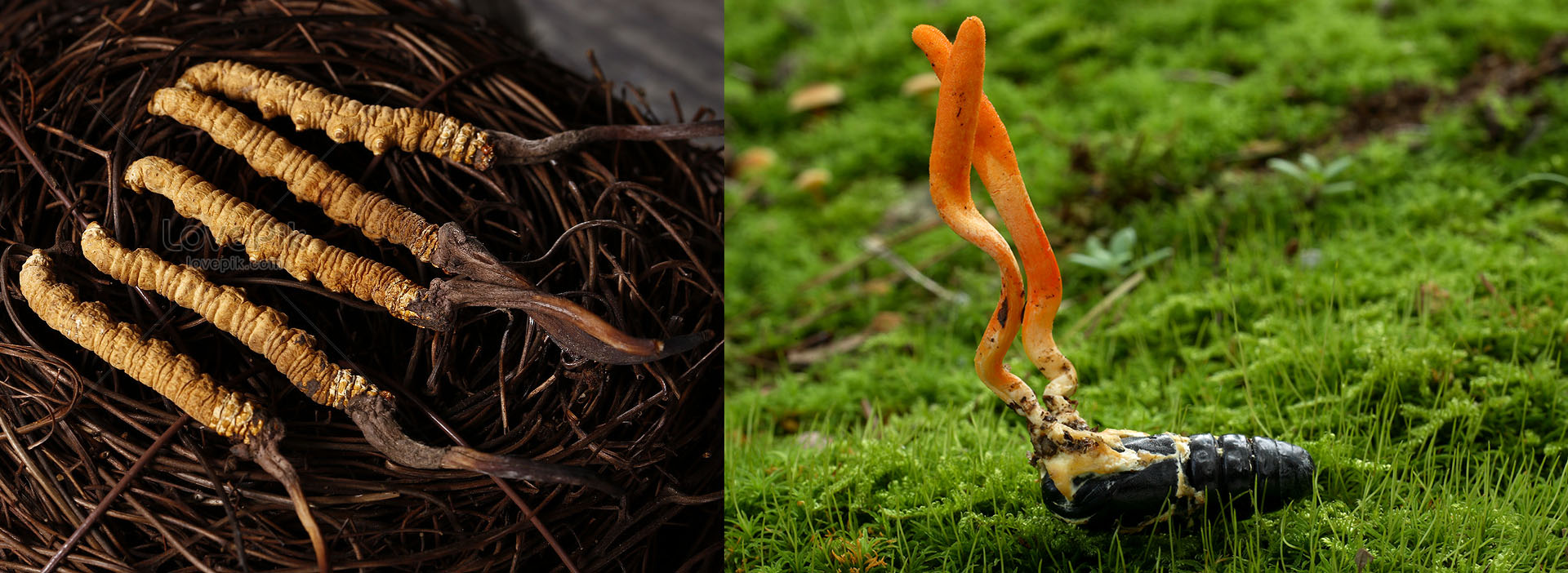
Cordyceps Militaris is a parasitic fungus used in Oriental Medicine for its wide range of pharmacological effects, including: anti-tumoral, immunomodulatory, anti-inflammatory and reinvigorating properties. Much like Wild Ginseng, it’s a naturally scarce ingredient, which lead it to become the world’s most expensive fungus, with prices going up even to $140,000 per kg8. It is said that numerous Chinese leaders, from ancient emperor Qin Shi Huang to Yang Guifei enjoyed the miracles properties of this mushroom9.

The resulting ingredients are:
These three core ingredients were developed to replenish the main vital fluids that decline with age: Qi (기,氣), Blood (혈, 血) and Essence (정, 精), so their combined action is referred to as Gihyeoljeong (기혈정, 氣血精), literally Qi + Blood + Essence.

⬥ Andrographis Paniculata Extract (칼메그추출물, 穿心莲)
Andrographis Paniculata, commonly known as ‘king of bitters, is a herbal remedy known for its remarkable ability to alleviate internal heat and dampness, and dispel toxins. In Oriental Medicine, the herb has been traditionally used to treat a variety of health conditions, from respiratory infections and fevers to digestive issues and boosting the immune system.
The primary active component of Andrographis Paniculata, Andrographolide, exhibits a wide array of biological benefits, including anti-inflammatory, antibacterial, antitumor, antidiabetic, antimalarial, and hepatoprotective properties11.
Beyond its traditional medicinal applications, Andrographis Paniculata’ s anti-inflammatory and antibacterial qualities also make it a compelling ingredient for addressing various skin concerns. Furthermore, studies have suggested its potential in combating signs of aging, such as improving skin hydration, dermal density, and reducing wrinkling and sagging11.
The History of Whoo brand employed a meticulous five-step process to extract and concentrate the Andrographis Paniculata utilised in their Hwanyu skincare line. This process consists of extraction, concentration, purification, filtration, and drying, resulting in a final product wherein the Andrographolide content is concentrated to 120 times its original potency.
⬥ Perennial Fallopia Multiflora (장생하수오, 長生何首烏)
Perennial Fallopia Multiflora (Polygonum Multiflorum) has long been valued in Oriental Medicine for its role in addressing age-related health concerns. The herb is renowned for its ability to boost Kidney and Liver function, replenishing vital energy and promoting longevity.
Hailed as the “Cure to Old Age”, Perennial Fallopia Multiflora is commonly used to combat premature aging symptoms like greying hair, fatigue, and reduced vitality.
While the standard Fallopia Multiflora variety takes about 4 years to mature for harvesting, its perennial counterpart can thrive for over 50 years, allowing it to accumulate more nutrients from the soil over a longer period.
⬥ Imperial Ginsenium™ (임페리얼 진세니움™)
Imperial Ginsenium™ is an innovative anti-aging ingredient discovered by the Whoo Oriental Medicine Skin Science Research Center after 15 years of research on the properties of Wild Ginseng. Imperial Ginsenium™ (임페리얼 진세니움™), also known as Weizmannia Ginsengihumi or Bacillus Ginsengihumi, is a novel bacterial strain isolated from the roots of 30-year-old natural Wild Ginseng.
This bacterial strain has been shown to secrete phytohormone indole-3-acetic acid (IAA), as well as increase bioavailability of numerous low-molecular-weight ginsenosides, including Rg2(R), Rg4, Rg6, Rg3(S), Rg3(R), Rk1, Rg5, Rh1(R), Rk3, and Rh4, offering a wide range of skin benefits10.
Imperial Ginsenium™ is designed to to reinforce the very essence of youthful skin vitality, facilitating the delivery of active ingredients while simultaneously nourishing and rebalancing the skin from within. By fortifying the skin’s natural defences, Imperial Ginsenium™ effectively combats environmental challenges and external stressors, preventing the acceleration of skin aging.
The ingredient is protected by a patent in Korea (patent number 1020210057293) and has been deposited at the Korea Collection for Type Cultures (KCTC) under the Korea Research Institute of Bioscience and Biotechnology (KRIBB), with the deposit number KCTC 14462BP.

Products
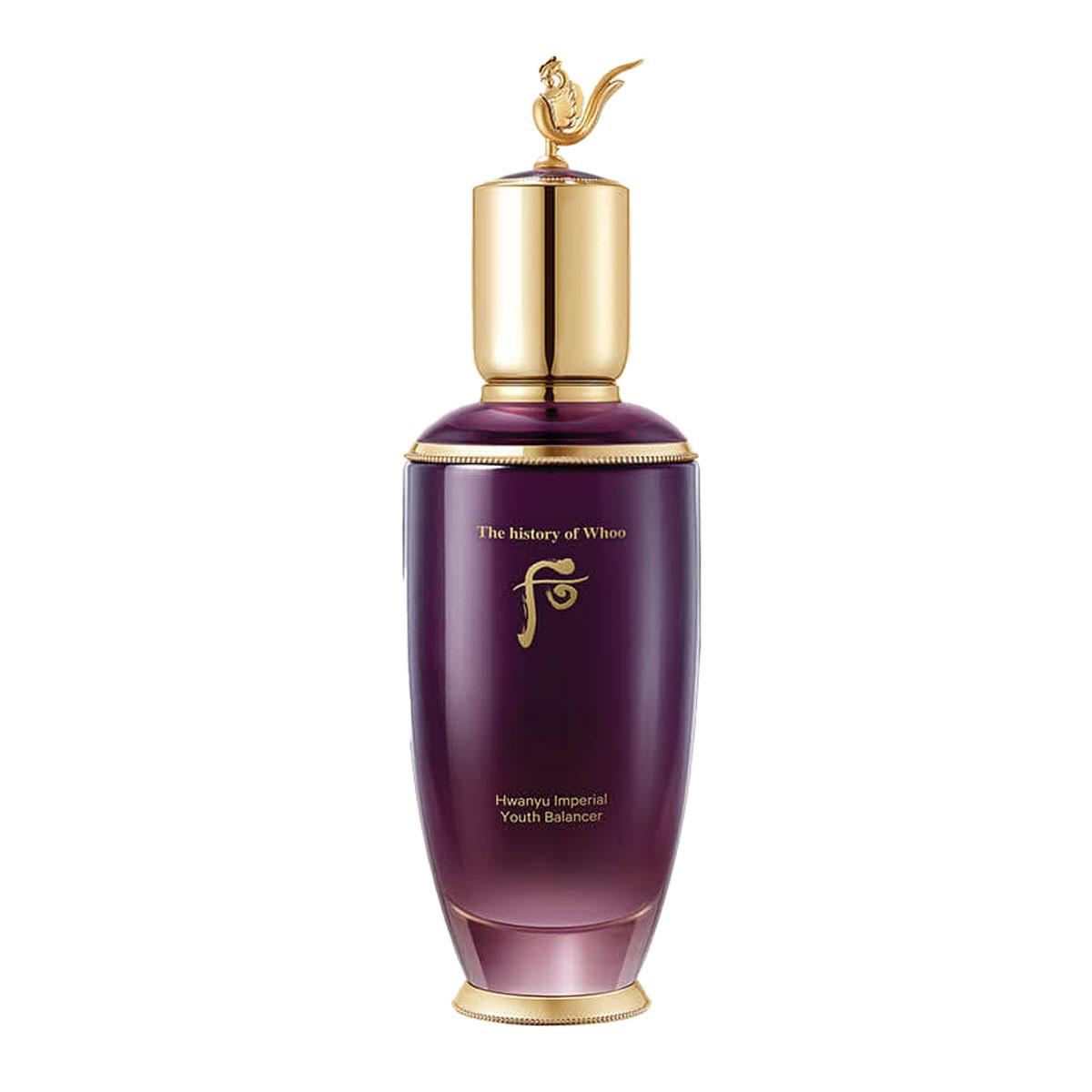
Hwanyu Imperial Youth Balancer
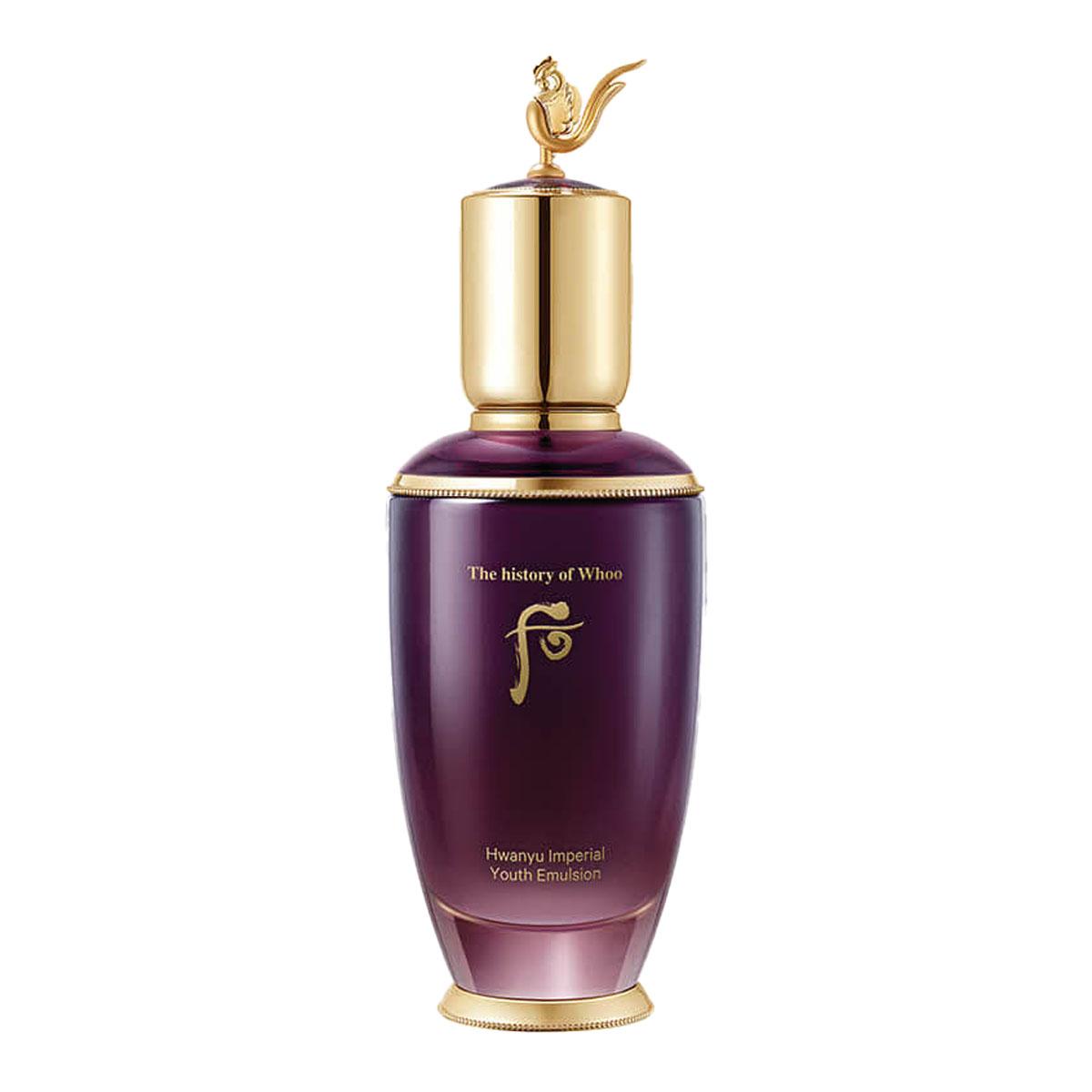
Hwanyu Imperial Youth Emulsion
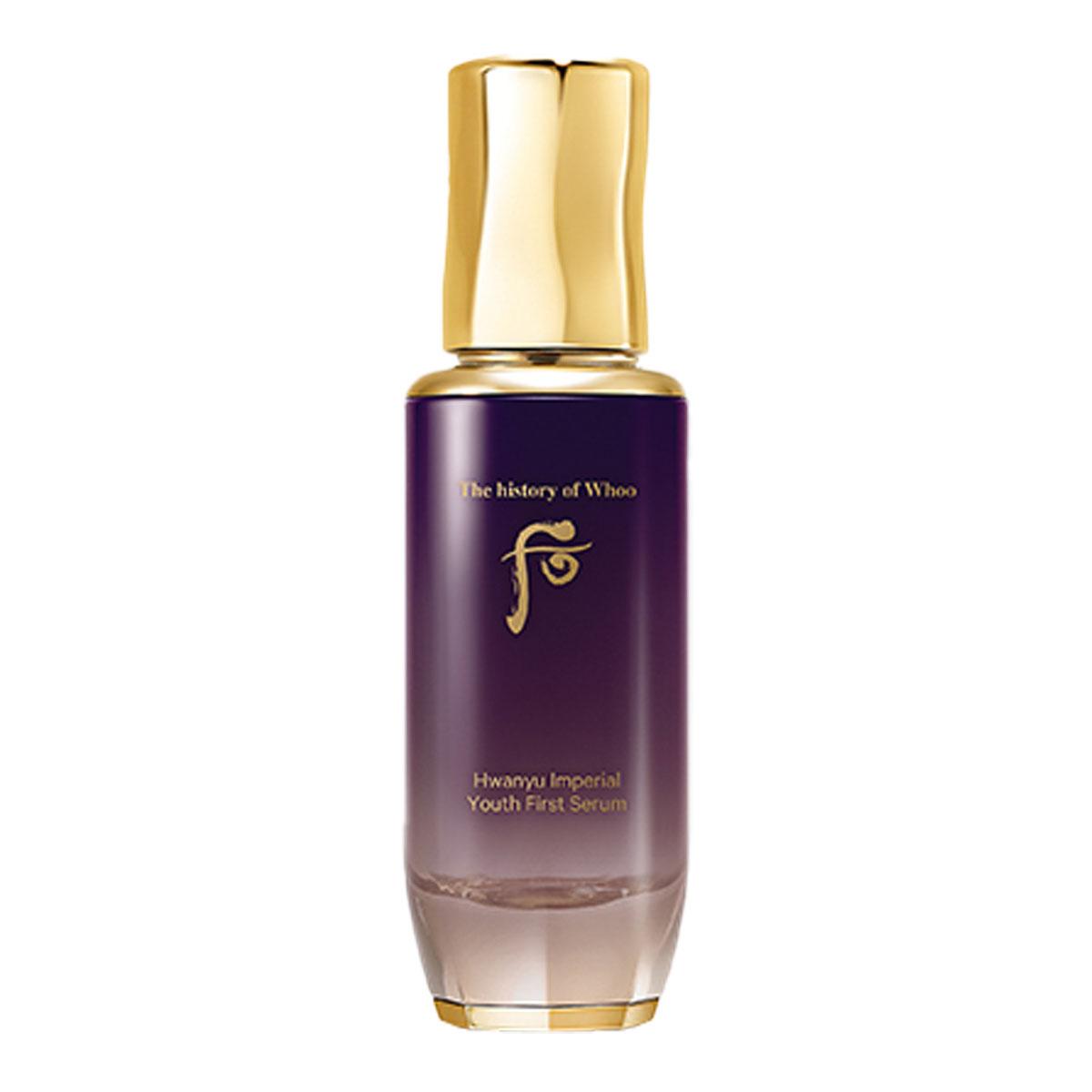
Hwanyu Imperial Youth First Serum
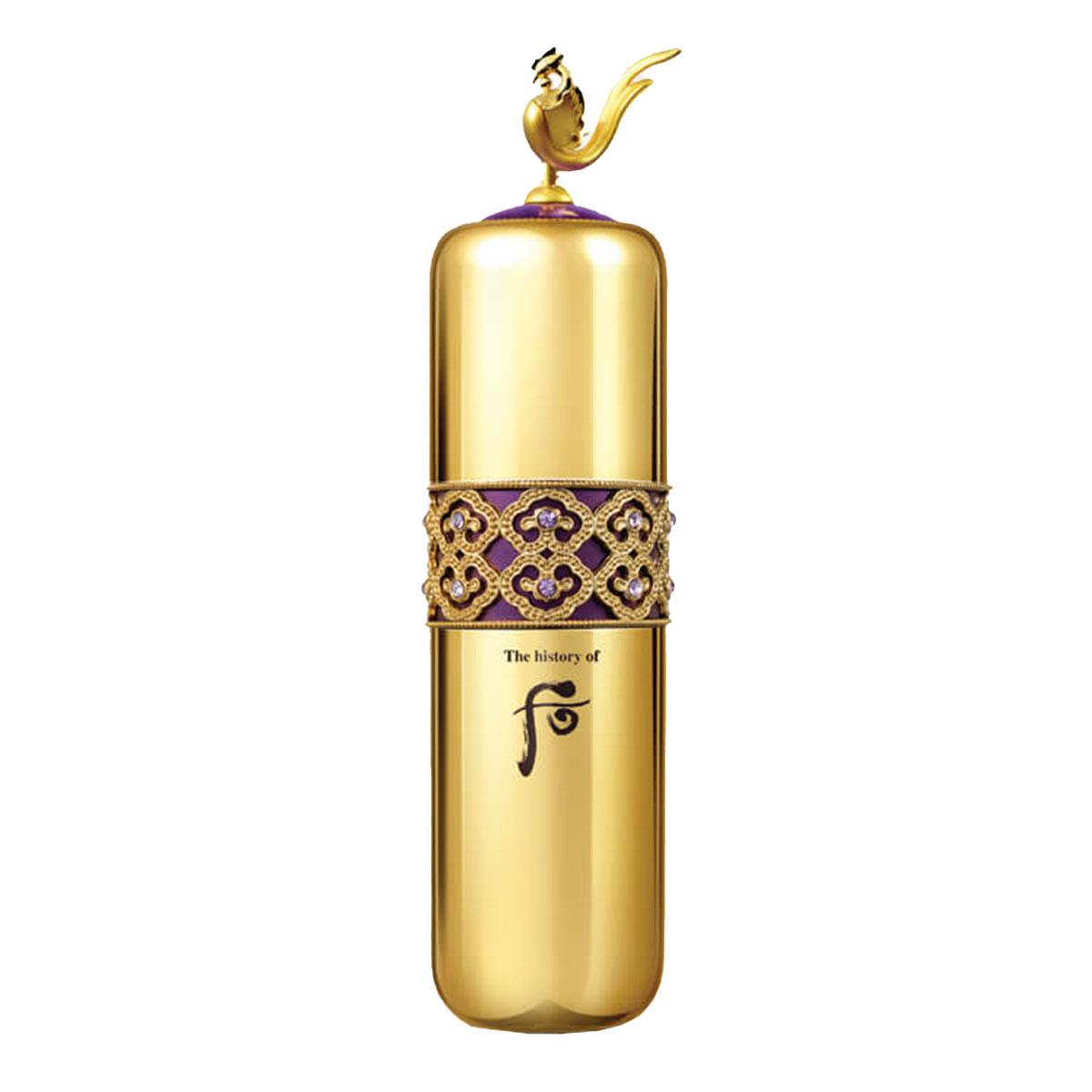
Hwanyu Signature Ampoule
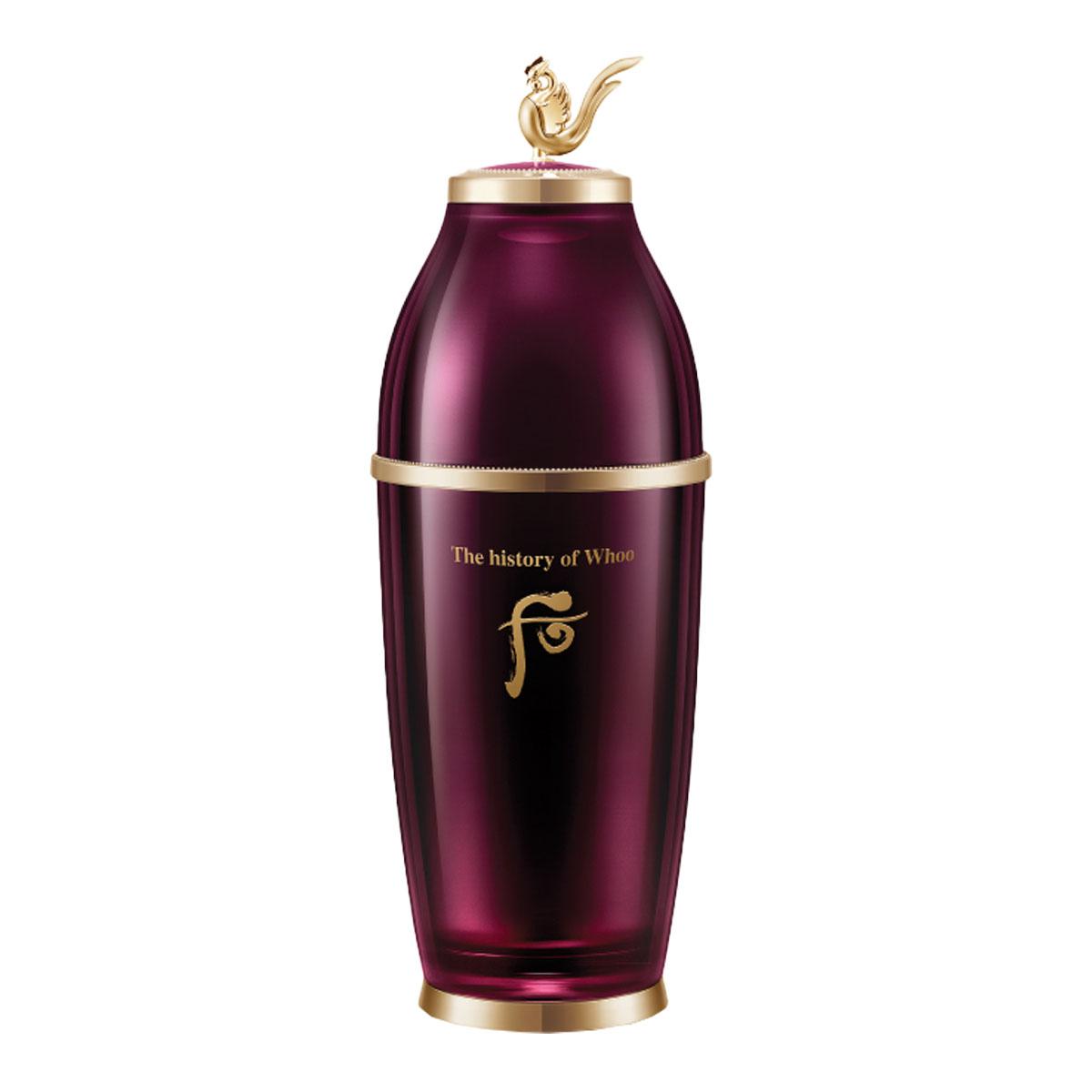
Hwanyu Imperial Youth Recovery Serum
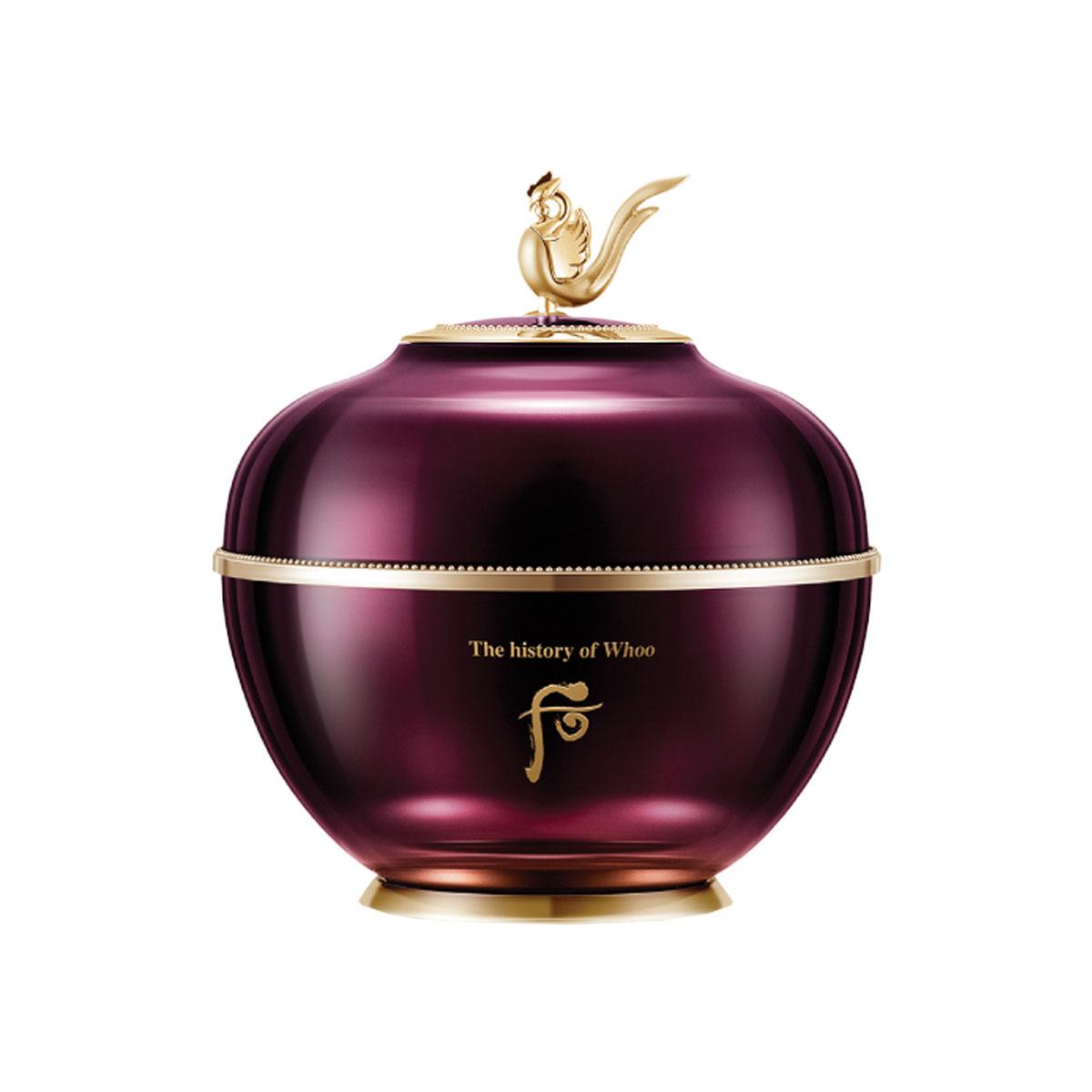
Hwanyu Imperial Youth Master Cream
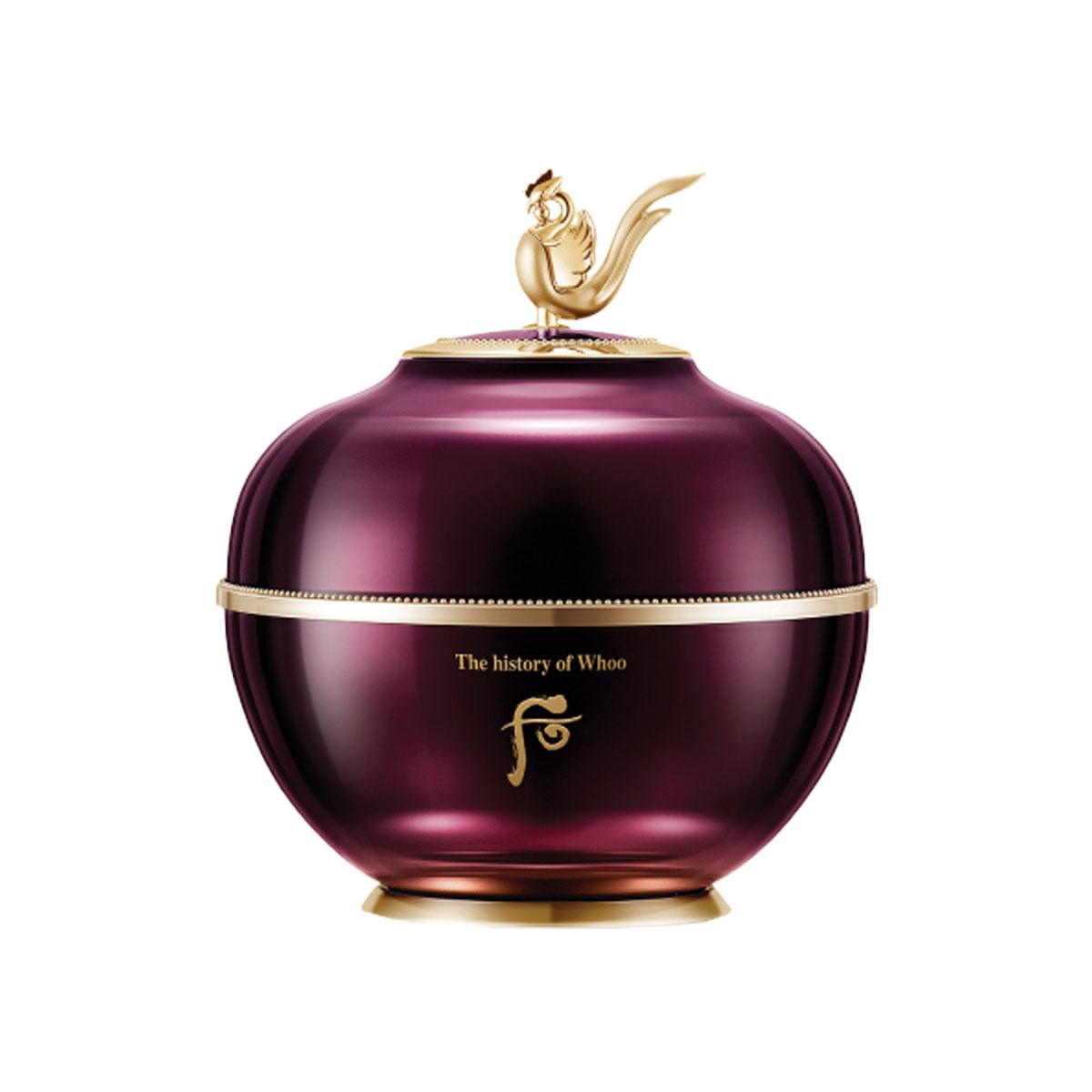
Hwanyu Imperial Youth Contour Eye Cream
⬥ Recommended order of use

Shop the Line
⬥ International retailers
⬥ South Korean retailers
Make sure to check out the Discount & Coupons page to access exclusive offers for major Korean skincare retailers.

Notes
- 더후. (2024). “5월기획”. LG생활건강.
- Jeong H. (2009) 인삼ㆍ산양삼ㆍ자연산 산삼의 ginsenoside 함량 분석 및 홍삼화 후 성분변화 비교. 상지대학교 학술정보원.
- 이명동. (2006). “산삼의 종류와 복용법.”
- 경남일보. (2018). “[농업이야기]천종산삼(天種山蔘)장영호(경남도농업기술원 약용자원연구소장).” 경남일보
- 우리시대명인 ┃ 우리시대 마지막 푸레옹기 장인 배요섭씨. 대산농촌재단. (n.d.).
- 검고 푸른 옹기 “푸레도기” 작가 4인 초대전. 서부신문. (2014, September 22).
- Kim, H., Ryu, J., Lee, J. et al. (2015). A systems approach to traditional oriental medicine. Nat Biotechnol.
- Hou, David Anderson, Chia-Yi. (2021). “The World’s Most Valuable Parasite, Caterpillar Fungus, Can Cost up to $63,000 per Pound.” Business Insider.
- KBS World. (2019). “BIOARA Dreams of Becoming the World’s Leading Cordyceps Provider.”
- Kwon, M., Lee, H., Lee, S. Y., & Jin, M. H. (2022). Characterization of weizmannia ginsengihumi LGHNH from wild-ginseng and anti-aging effects of its cultured product. Microbiology and Biotechnology Letters, 50(3), 414–421. https://doi.org/10.48022/mbl.2204.04007
- You, J., Roh, K. B., Li, Z., Liu, G., Tang, J., Shin, S., Park, D., & Jung, E. (2015). The Antiaging Properties of Andrographis paniculata by Activation Epidermal Cell Stemness. Molecules (Basel, Switzerland), 20(9), 17557–17569. https://doi.org/10.3390/molecules200917557
